Description
Geocell Parameter
1. Cell depth: 50mm,100mm,150mm,200mm,250mm
2. Welding space: 330mm~1600mm
| Item | Height(mm) | Thickness (mm) | Welding Distance (mm) | Tensile strength of welding points (N/cm) | Tensile strength of connection of cells (N/cm) | Tensile strength at yield of each sheet (Mpa) |
| Smooth and Not Perforated | 50≤H≤250 | 1.0~1.2 | 330≤A≤1000 | ≥100 | ≥120 | ≥20 |
| Smooth and Perforated | 50≤H≤250 | 1.0~1.2 | 330≤A≤1000 | ≥100 | ≥120 | ≥20 |
| Textured and Not Perforated | 50≤H≤250 | 1.5~1.7 | 330≤A≤1000 | ≥100 | ≥120 | ≥20 |
| Textured and Perforated | 50≤H≤250 | 1.5~1.7 | 330≤A≤1000 | ≥100 | ≥120 | ≥20 |
| Remarks: All technical indexes can be customized, and the other special standards will be carried out by agreement or contact. | ||||||
As a professional geogrid manufacturer, QIVOC sells geogrids at low prices and high quality. Contact us and you will get the cellular confinement system price and geocell cost per square foot.
Please refer to the following parameters before customizing the product.
Thickness customized: 1.0mm – 1.7mm
Customized width: 1m – 8m, or any length
Surface customization: smooth, single-sided texture, double-sided texture
Color customization: Default black, other colors can be customized
Minimum order quantity: 1SQM
Payment method: LC, T/T, Western Union
Supply capacity: 90,000 square meters/day
Delivery time: 7-15 days
Conventional packaging: Geocell roll packaging woven bag or according to your requirements.
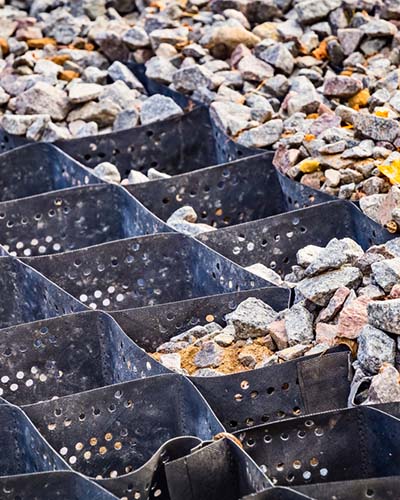
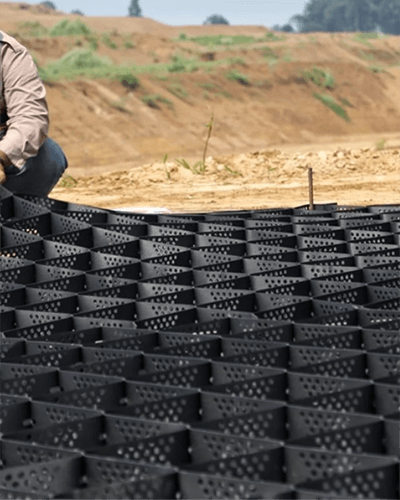
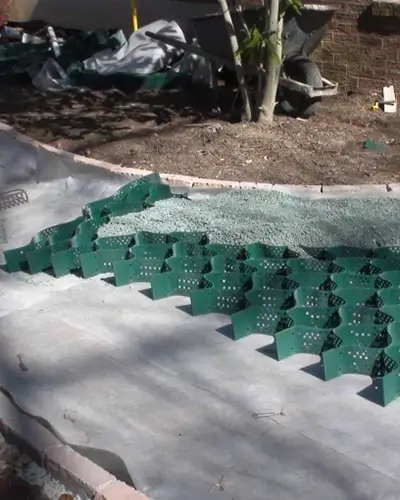
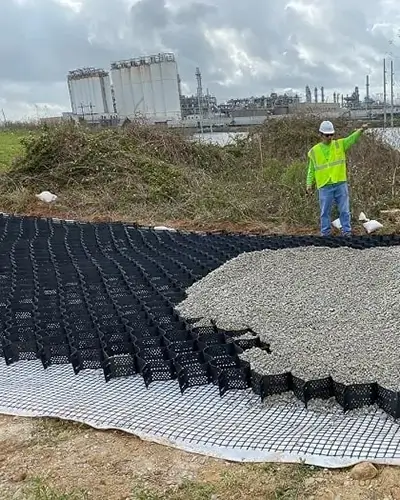
Cellular Confinement System Advantages
As a geocell supplier with 20 years of experience, we take pride in the following advantages of our products:
- Environmentally Friendly: The high-density polyethylene material used in HDPE geocells is environmentally friendly, producing no harmful substances and ensuring safety.
- Ultra-High Load-Bearing Capacity and Durability: Plastic geocell exhibit exceptional strength, withstanding various loads such as vehicle rolling, mechanical impacts, and seawater erosion across a wide range. They are resilient to solar radiation and oxidation, ensuring a lifespan of over 10 years.
- Support Stability: Geogrid cellular paving system enhance foundation bearing capacity, improve road surface smoothness, resist soil sliding, and maintain structural stability, preventing deformation.
- Soil Protection: When applied on river banks and slopes, geocell fabric prevent soil erosion, loss, and improve soil bearing capacity. They contribute to soil stability and prevent deformation.
- Convenient Construction: Geocell confinement system offer flexibility in creating complex structures tailored to site-specific needs. This feature significantly reduces labor intensity, minimizes roadbed thickness, accelerates construction, and lowers project costs.
HDPE Geocell Applications
HDPE Geocells find wide applications in various fields such as earthworks, water conservancy projects, and transportation projects, offering a high-performance and versatile solution among geotechnical materials.
- Road Base Reinforcement: Geocellular confinement systems are used to reinforce road bases by being placed at different depths beneath the roadbed. This improves the roadbed’s bearing capacity and settlement resistance, preventing cracks and deformation of the road surface.
- Temporary Storage Yards: Honeycomb geogrid serve as an alternative to traditional concrete paving for quickly establishing temporary storage yards. Their modular design allows for easy dismantling and reuse, enhancing construction efficiency and flexibility.
- River Embankment Reinforcement: When the river embankment is extensive and high, relying solely on clay reinforcement may not significantly enhance stability. By incorporating cellular confinement grid with clay, the internal friction of the embankment increases, improving overall protection capabilities.
- Filling Projects: In filling projects, geocell cellular confinement system effectively address soil collapse issues associated with filling, greatly enhancing the overall stability and safety of the filling.
- Coastal Protection: Perforated geocell play a crucial role in coastal protection for marine engineering. Their three-dimensional structure utilizes their physical properties to counter erosion caused by rainwater, seawater, and other fluids along the coast.
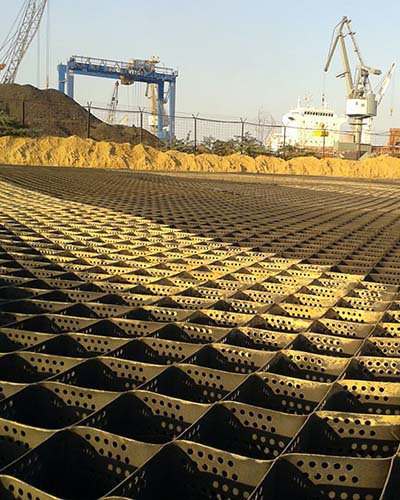
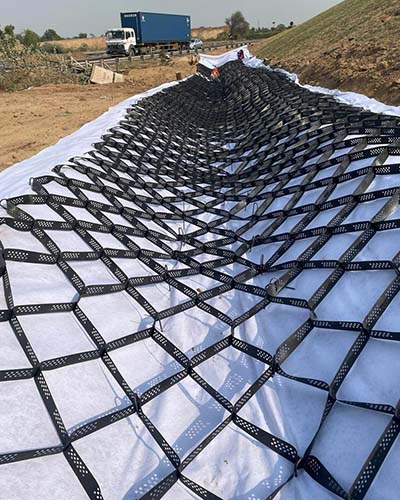
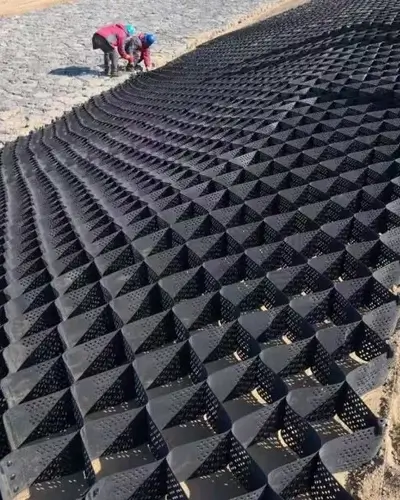
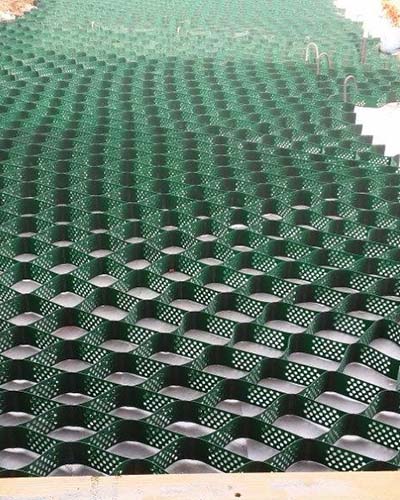
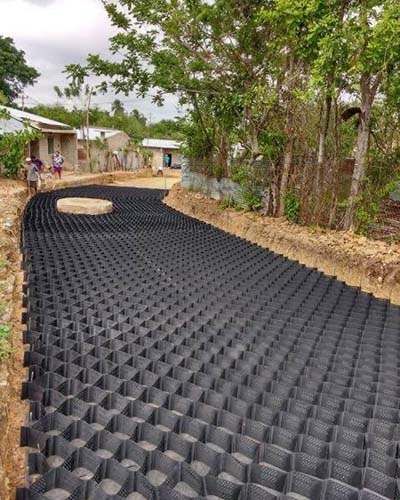
“Have a question? Click the button below to reach out to us directly for personalized support. ”
Rest assured, we’ll respond to your inquiry within 2 hours.
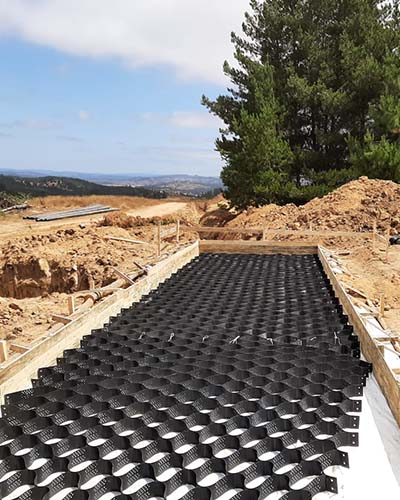
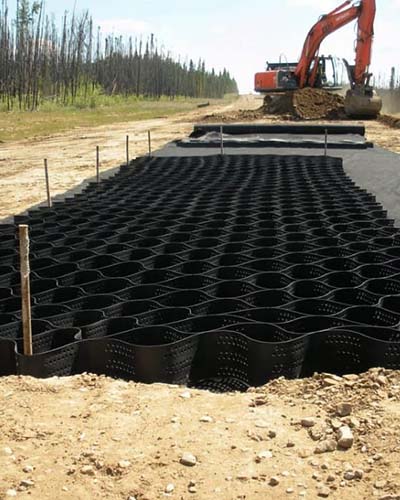
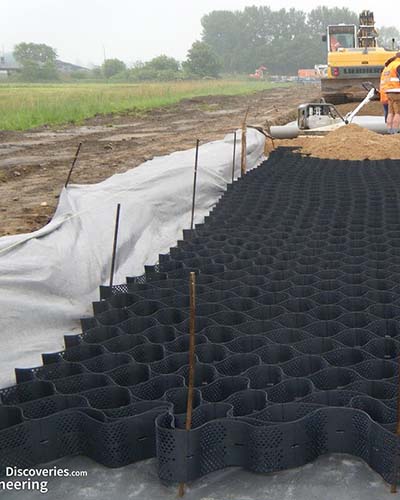
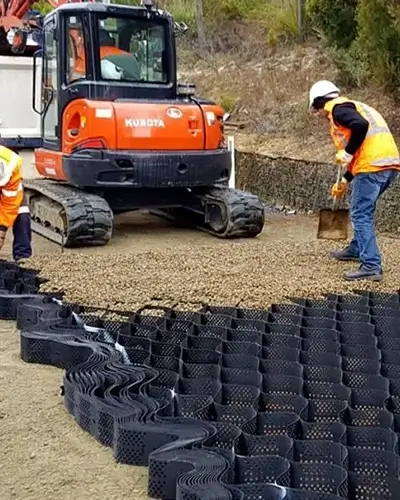
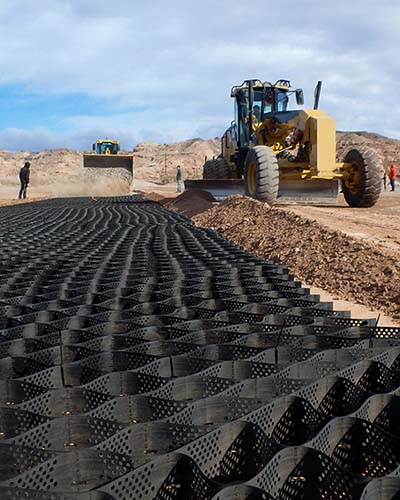
Plastic Geocell Installation Procedures
Using and installing the geocell is straightforward and convenient. Below is a standard construction process.
- Prepare the Surface: Clean the project area meticulously, ensuring it meets the specifications outlined in the drawings. Achieve flatness and tidiness, addressing any uneven ground by either thorough cleaning or adding supplementary material for leveling.
- Laying Procedure:
a. Geocell Unfolding: Start laying the soil confinement system network from the road shoulder, unfolding it along the slope towards the bottom. Ensure the end slot of the cell aligns with the U-shaped anchoring trench.
b. Anchor Piles Installation: Lay anchor piles (ground anchors) at the bottom of the U-shaped anchor trench, fixing the slots at the end of the cell.
c. Mid-Slope Anchoring: Carry out anchoring in the middle of the slope. Initially fix the left and right sides of the stretched cellular confinement mat mesh. Temporarily fix the bottom opening with anchors and then install and position the mid-slope grid according to the drawing dimensions.
d. Lowest Grid Anchoring: Anchor the lowest grid by burying its edge into the slope bottom filling ditch, using J-type anchors. After filling the soil, remove the J-shaped anchor used to fix the lower end.
e. Repeat the Cycle: Follow the above method in a repetitive cycle, laying the geocell mesh in groups. Ensure alignment of adjacent sets, overlap the sides, and use special buckles to connect the ends, forming a cohesive structure. - Filling and Burying: After passing inspection and acceptance, proceed with filling and burying operations. Start with top filling, burying the top U-shaped anchoring trench, and continue filling from top to bottom along the slope. Maintain a thickness increase by one-third of the geo geocell height after burying each layer.
- Consolidation: After manual raking, employ machinery for compaction to prevent shifting. Ensure the potential energy height of rolling equipment does not exceed 1m to avoid damaging the completed slope due to heavy impact.
Precautions for Installation of Geogrid Cellular Paving System
While the construction of geogrid cellular paving system is relatively simple, attention to the following considerations is crucial during installation. Here are specific precautions for cellular confinement system installation:
- Verify the hdpe geocell’s design requirements and specifications before construction to prevent unnecessary damage during the process.
- Ensure the construction site is clean, flat, and orderly to uphold construction quality and safety standards.
- Compensate and test the plastic geocell regularly during construction to promptly identify and address any issues that may arise.
- Adhere to safety regulations and operating procedures to prioritize the safety of construction personnel and facilities.
- Pay attention to environmental protection throughout the construction process to prevent adverse effects on the construction environment.
- Avoid placing geocell fabric directly on the original roadbed surface. Instead, set a sand cushion of approximately 5 cm, level it, and then lay the geocell confinement system.
- Utilize gravel as the slope material for the geocellular confinement systems, ensuring the maximum particle size does not exceed 3 cm.
- When laying, ensure the direction of the welding distance aligns with the embankment cross-section for optimal strength.
- Cover the top surface of the honeycomb geogrid with a protective layer, such as gravel, and roll it accordingly.
- Employ vibratory rollers for effective compaction during the construction process.
- Store geocell cellular confinement system in a cool place, sheltered from sunlight or rain, and ensure accessibility as needed.
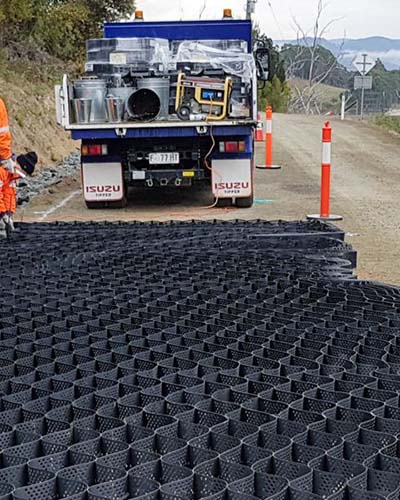
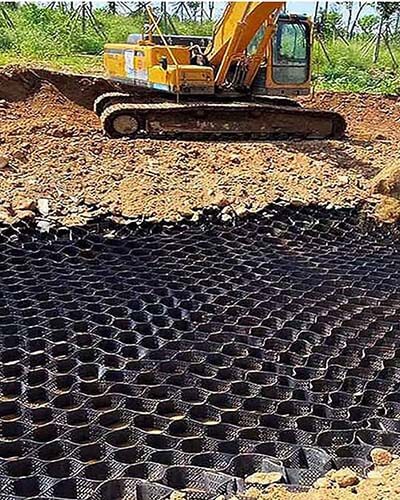
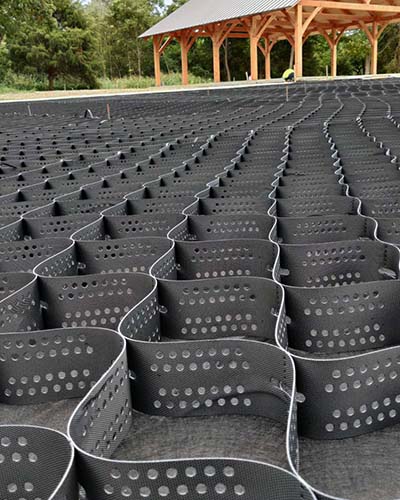
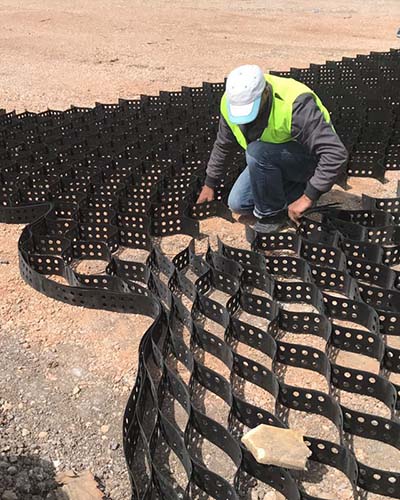
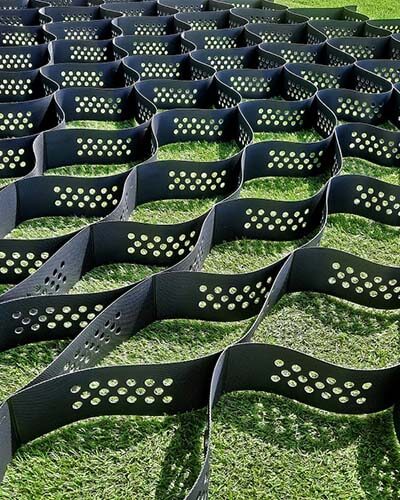
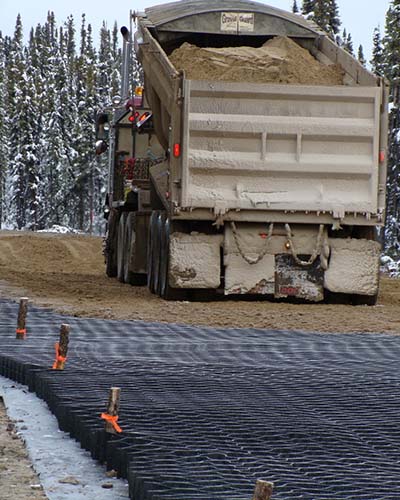
Recent Projects
Discover our recent client projects and explore the range of tailored, personalized support we provide. Share your requirements and receive the ideal solution.

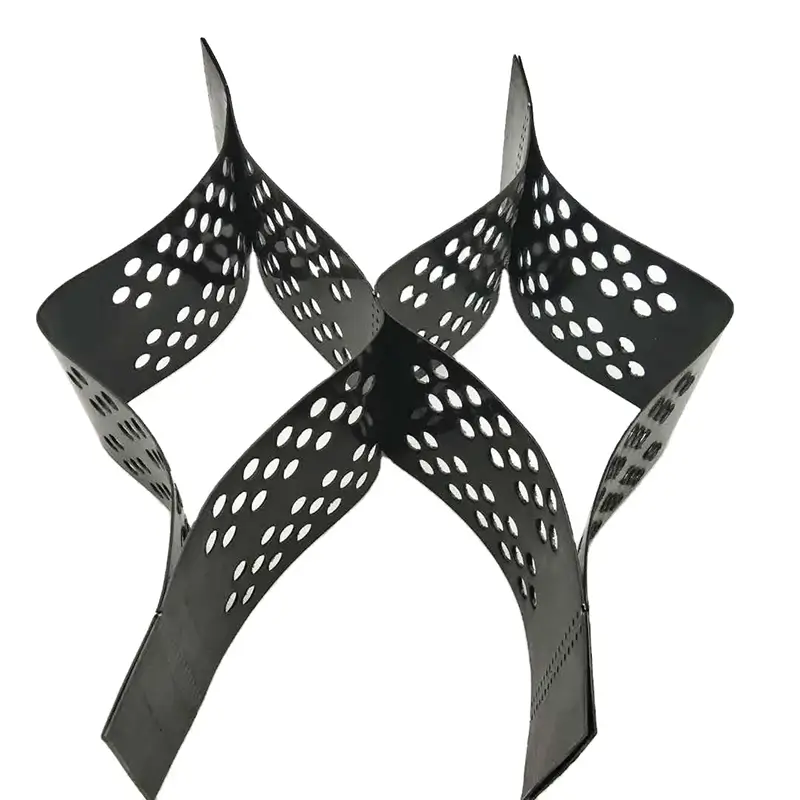
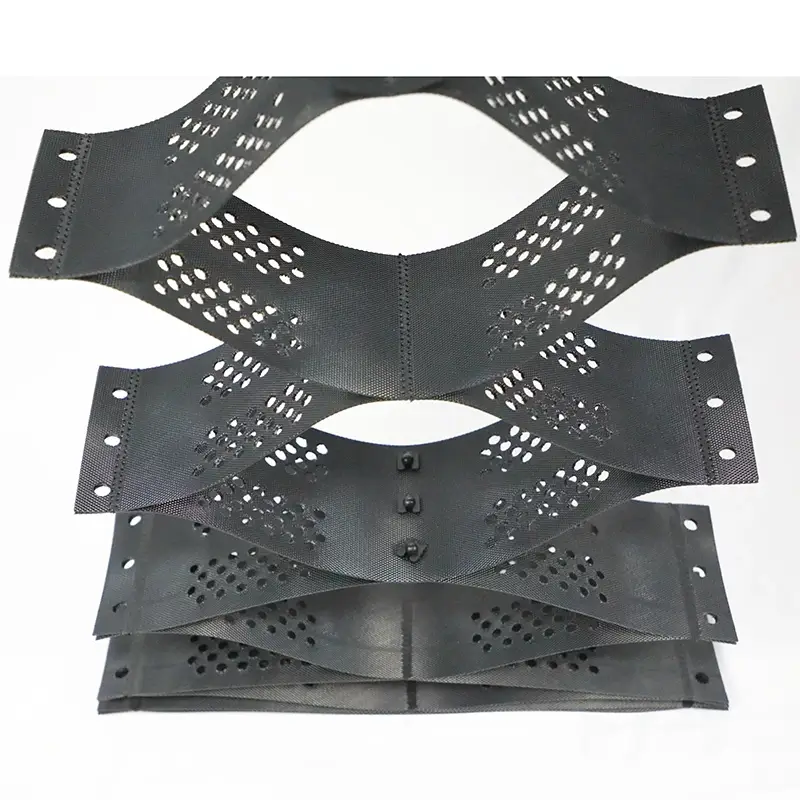
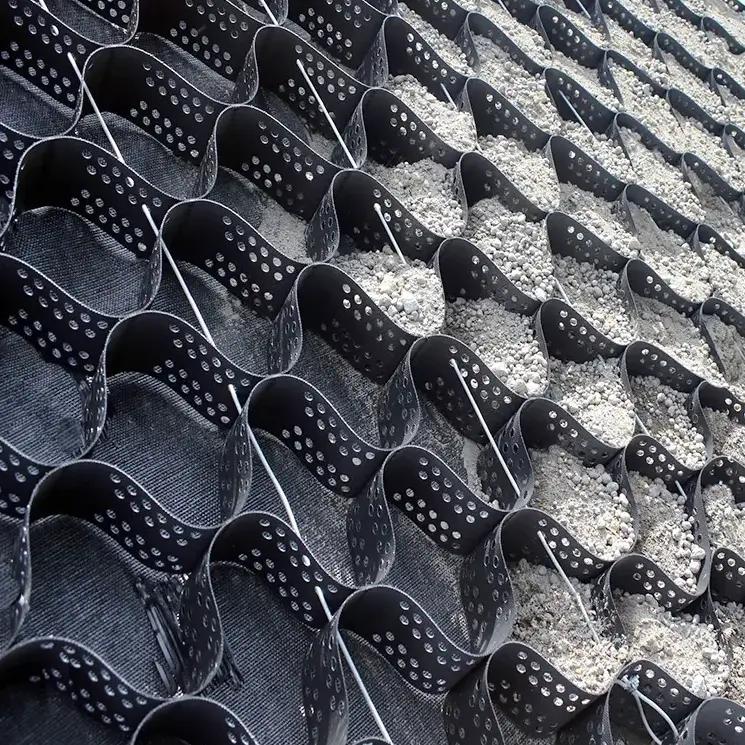
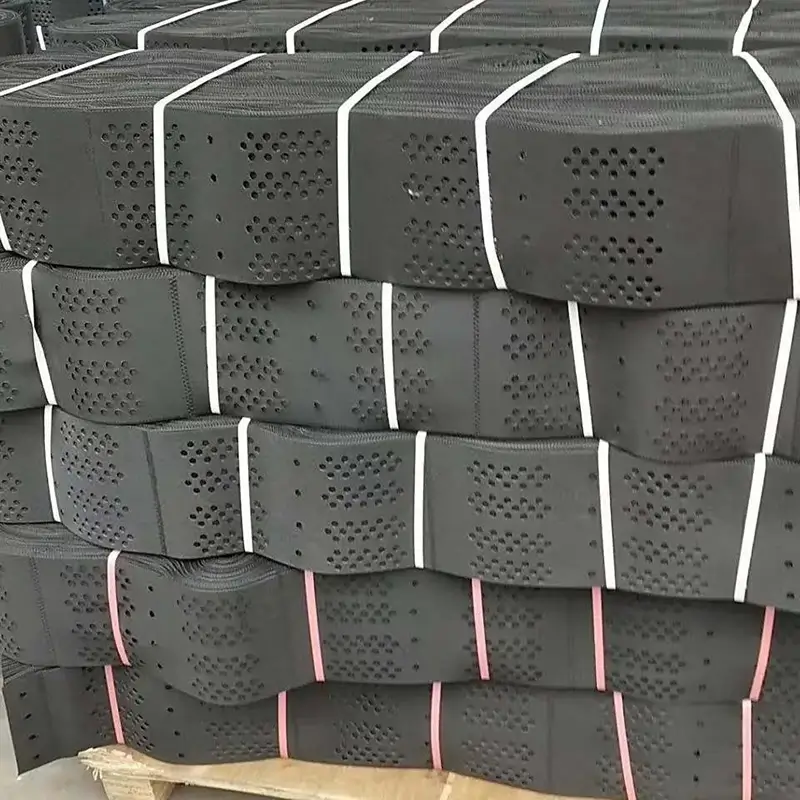
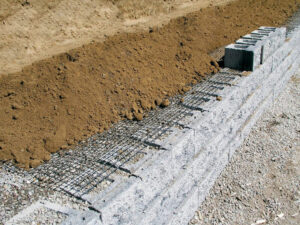

Reviews
There are no reviews yet.